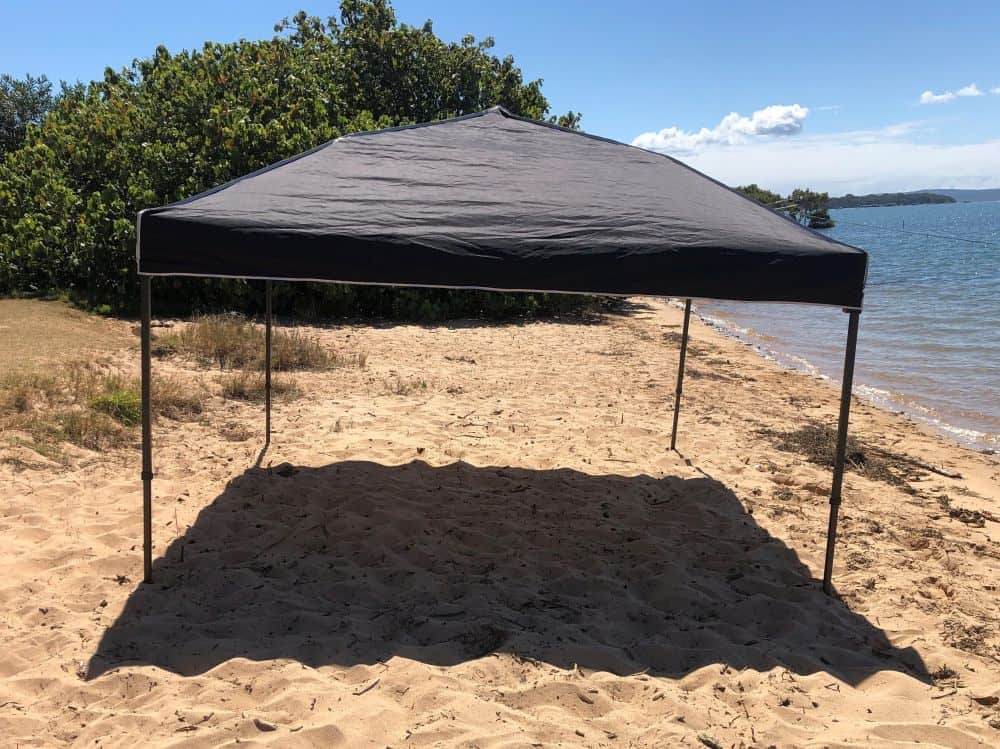What is the difference between a canopy and a tent?
Classifying a canopy as a type of tent makes the most sense to me, although the terms ‘canopy’ and ‘tent’ are often used interchangeably. This sometimes makes googling for a particular shelter hard, as advertisers often throw as many terms at the wall as possible in case one sticks in the search engine. Check one out the advertisement below – is it a canopy, gazebo, tent, or canopy tent? Even the dictionary can’t help clarify the situation – the term ‘canopy’ is a synonym for ‘tent’. In this article I describe what is a canopy tent, and its distinguishing features. To help clarify what is not a canopy tent I describe some other common tent types, their visual features, and why you would use them.
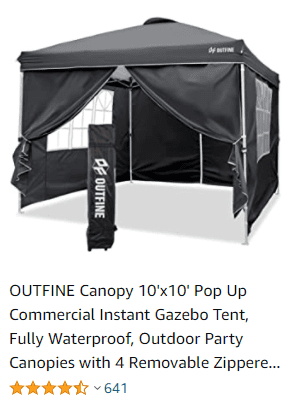
What is a canopy tent?
In the world of outdoor shelters a canopy tent most often referred to as an expandable metal frame on which you place a material cover. Canopy tents are visually recognisable by their peaked roof and open sides that allow you to walk underneath. They are generally referred to as a pop up canopy, but are also known as a canopy tent, instant up canopy, e-z up canopy. In the American rental market you’ll often see that these shelters are solely referred to as a ‘canopy’, and everything else is a ‘tent’. Over in Australia these types of shelters are called ‘gazebos’; which is confusing for Americans as that’s what they generally call more permanent shelters found in gardens/parks.
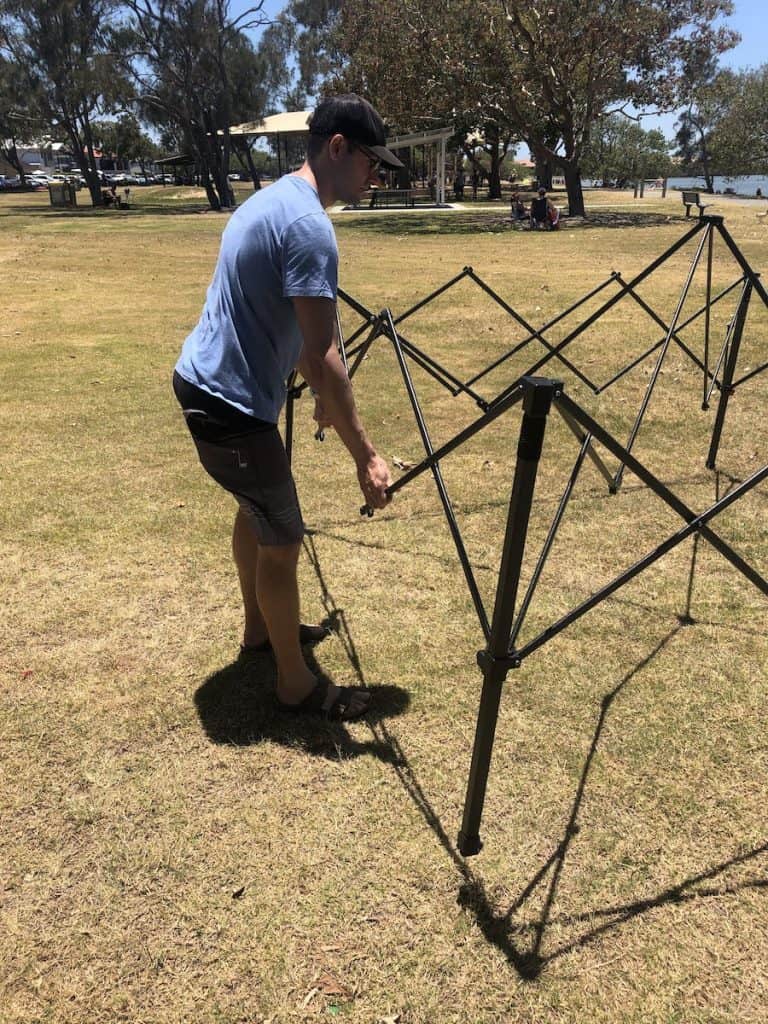

It’s ideal to have at least two people to help carry and setup a canopy tent, although it can be setup by one. They come in a range of sizes, and are often named by their dimensions, for example a ’10 x 10 ft pop up canopy’ is a shelter that has equal sides each measuring 10 ft in length; a ’10×20 pop up canopy’ is rectangular with a length of 20 ft, and a width of 10 ft. There are a heap of other geometries and attachments to suit specific needs.
Pop up canopies come in two general styles – slant and straight leg. A slant leg canopy will have a smaller canopy top area than the area at the base. For example, a slant leg canopy might be 10’x10’ between the feet at the base, but taper to 8’x8’ at the top. A straight leg canopy has the corners of the canopy top directly over the feet, which means its base dimensions will be the same as the shade cover at the top (i.e. base footprint reflects the shade area you will get). Find more information and resources on pop up canopies.
What is a tent?
As I mentioned at the beginning of this article, to me the term ‘tent’ encompasses almost all outdoor shelters including pop up canopies. However this is not how the terms are used by everyone. Another definition I have seen is that if the structure has open sides it’s a canopy, and if it’s enclosed than it’s a tent. This is an appealing comparison to use as it’s easy to observe. However this is contradicted by most people referring to larger shelters (like those used for events like weddings, fairs and circuses) as pole/frame tents, which are generally open sided.
In the sections below I have provided a visual guide to some other types of tent and what they are used for.
Camping Tent
If you did an image search for the term ‘tent’, you would see a lot of what is considered the ‘classic’ tent; a couple of poles with sheets (including a fly sheet) over the top forming a pitched roof, tensioned with a couple of guy ropes at either end (see pic below). Visually a camping tent looks different to a canopy tent because it is enclosed and often has multiple layers (eg. fly sheets), so as to keep you sheltered from the elements. By comparison pop up canopies are designed to have more open sides and only provide light weather protection.

The most basic form of camping tent is a tarp tent, and all you need is a tarpaulin and something to tie it to. They have been used throughout the centuries as a quick and light shelter option, particularly in the world’s military forces. Military folks might know this shelter as a poncho hooch (US), hootchy/hutchie (Australia), ‘basha’ (British/Australia). In mountaineering circles you might hear people referring to a bivouac shelter, or bivvy.
Tarp tents are generally quick and easy to setup (once you know how), and the few materials required mean they are also lightweight. You can string up your shelter to a tree/s, or you could use simple poles to hold it up. You can also buy purpose built fancier versions that come with lightweight poles and pegs.
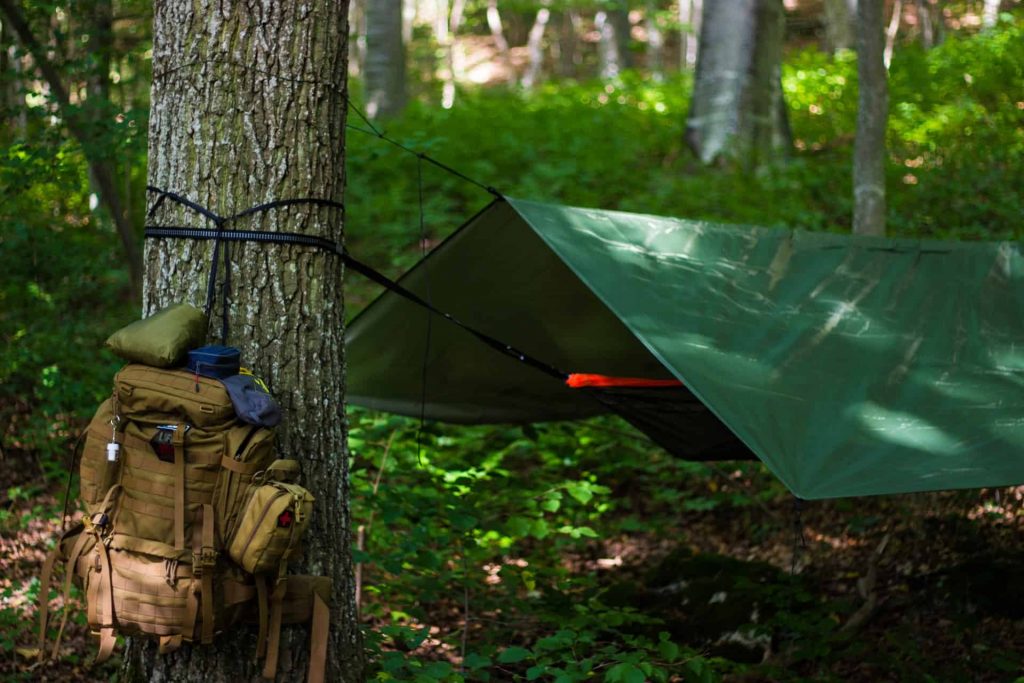
For the recreational camper, there is a huge range of camping tents that give you a more enclosed outdoor experience than the basic tarp-tent form. These are typically used for longer camping trips
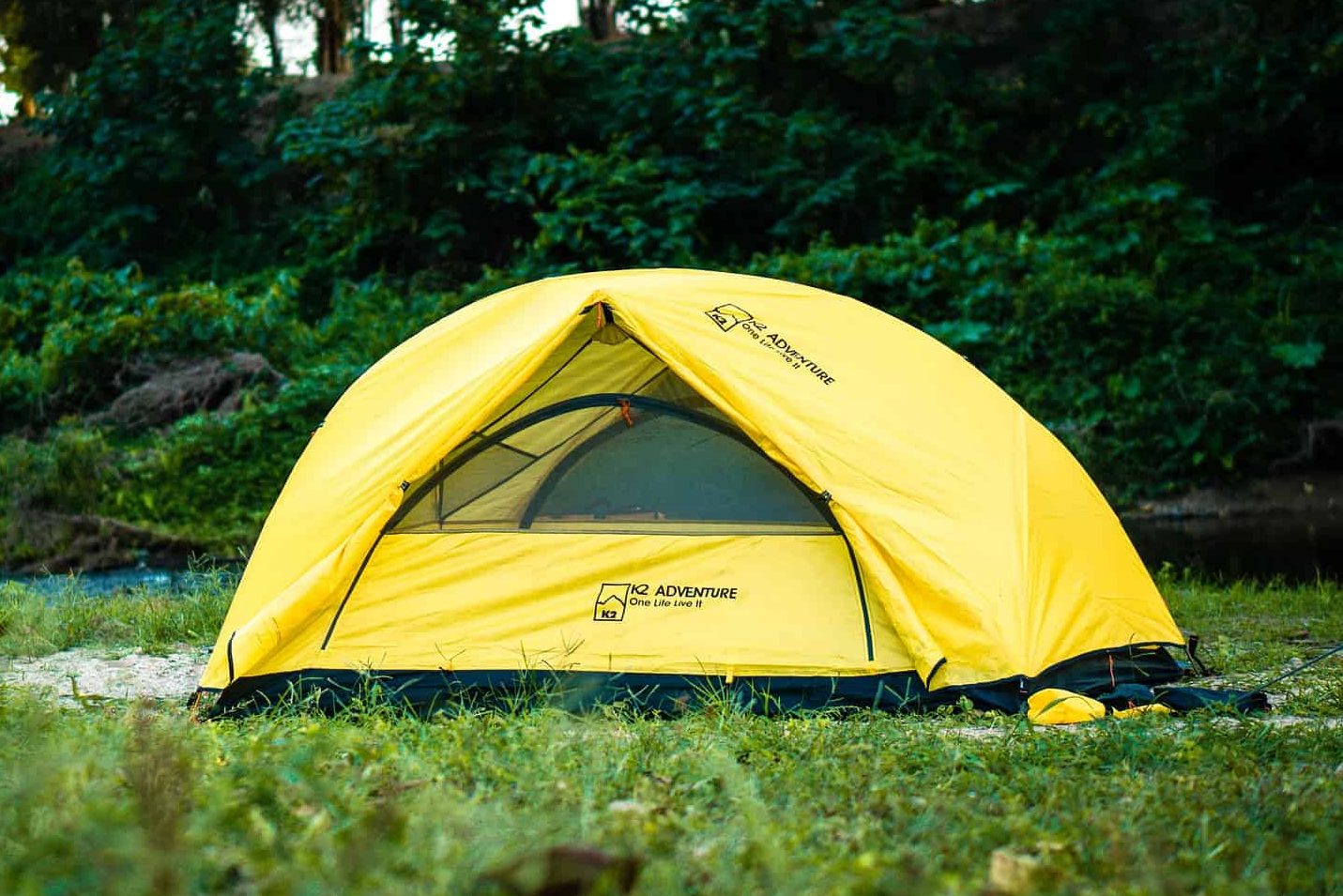
Shade Tent
Another class of tent has emerged in recent years to fill the gap between a fully enclosed camping tent, and a comprehensive canopy. These are designed to provide quick and easy shade on short trips (few hours), and often look like a tent that’s been cut in half (at least to me). These tents are often fitted with mechanisms that allow them to ‘pop up’, hence the terms pop up tent, or pop up beach tent (yes this is confusing with pop up canopies!). Shade tents are often referred to as ‘beach tents’, although there are of course many other types of shelters that are used on the beach.
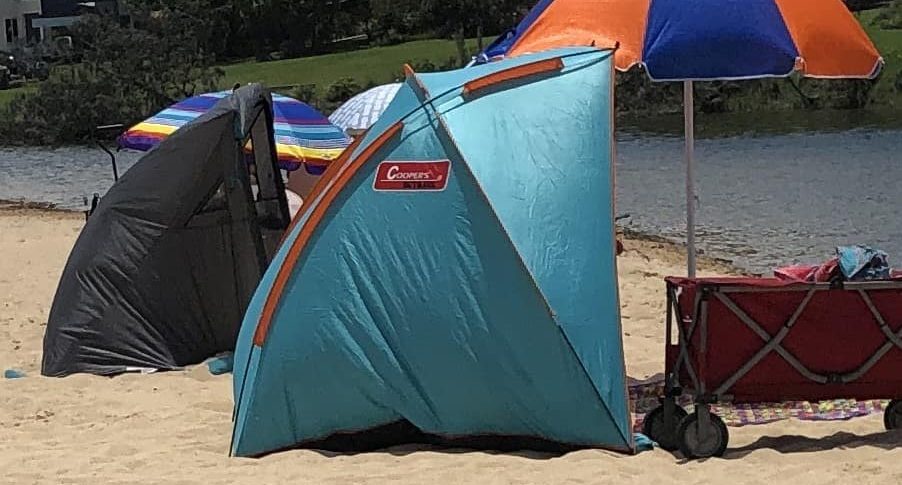
Cabana
Often seen on the beach these shelters have mechanisms similar to beach umbrellas, but also have pockets that hang down on the corners giving them a bigger shade area. They have become popular as a beach shelter as they provide great shade coverage while keeping weight to a minimum. They offer more shade than your typical shade tent and less than a standard 10 x 10 ft (3 x 3 m) canopy tent. They are just as easy to setup as shade shelters, and heaps more portable than a canopy tent.
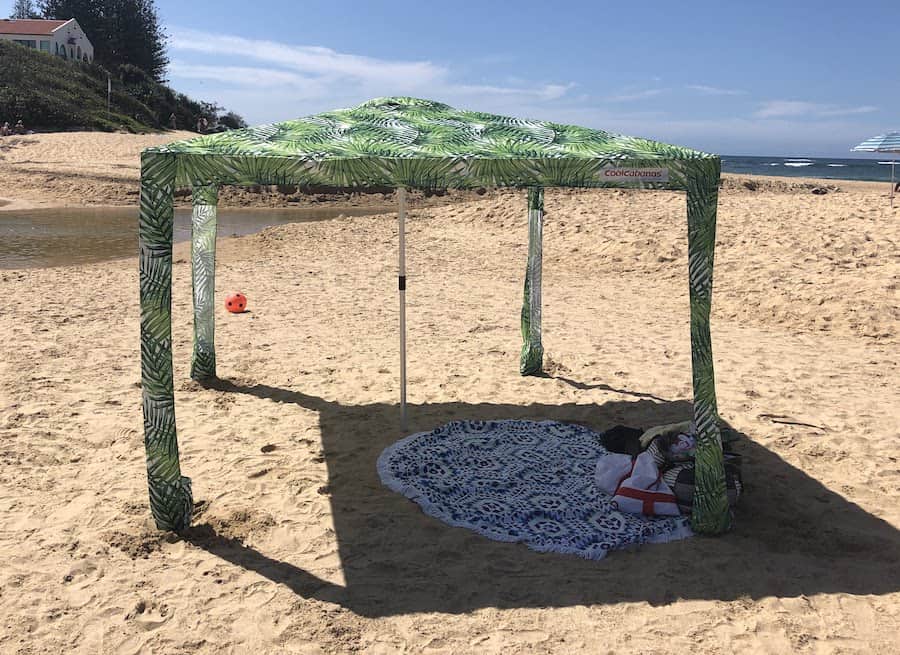
Pole Tent
Pole tents tend to describe large event sized shelters, rather than a little camping tents (that might confusingly also be held up with ‘poles’). Pole tents don’t have any kind of framing, rather they feature a tall central pole, and multiple smaller uprights that are staked and tensioned to hold the structure up. These look like a classic circus tent, and are instantly recognisable by having a central peak (or sometimes multiple).
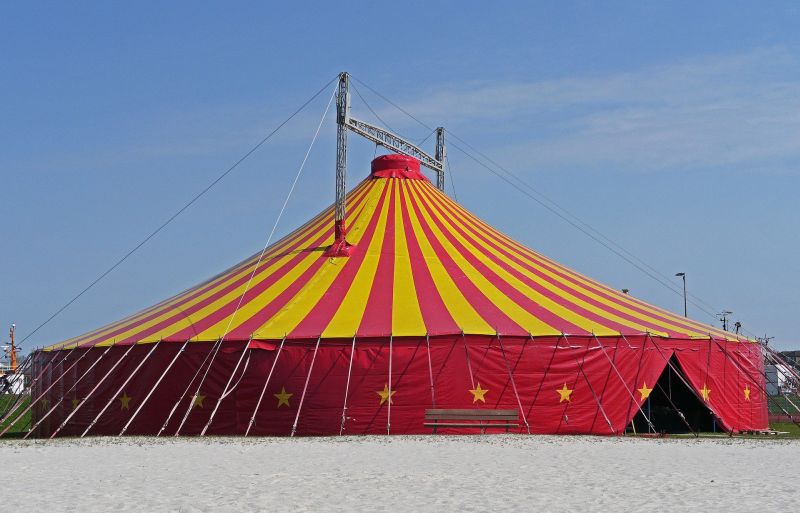
Framed Tent
As the name suggests, this style of canopy is supported by a rigid frame. This frame is generally made of plastic or metal connectors and poles that can be slotted together. Whilst they don’t need to be tensioned to stay upright, it’s best practise to secure each upright segment for added wind safety. Frame tents are visually different to pole tents as the You can pick a pole tent from a frame tent by the shape of the roof. The former has a peaked roof from the central pole sticking up, and a frame tent generally have a standard pitched roof.
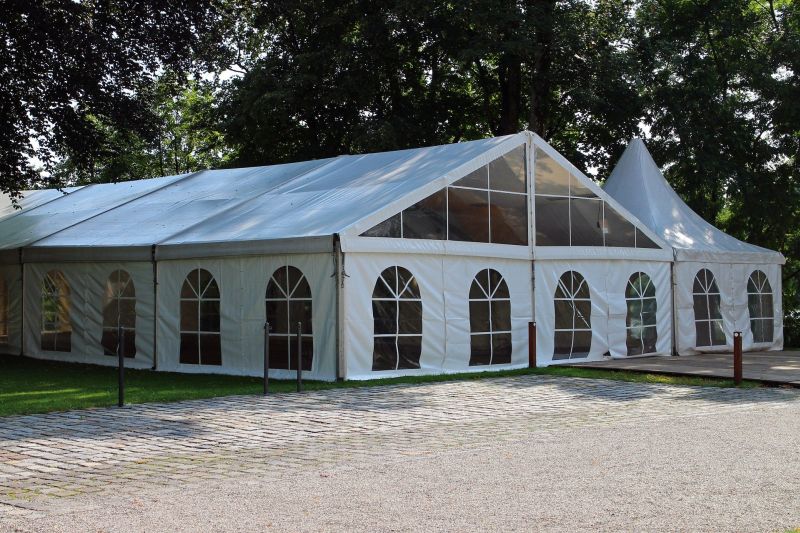
Canopies vs tents – which should you buy?
So should you buy a pop up canopy, or some other kind of tent? If you are planning an event with a few friends (or large family) like a backyard party, picnic, or need a short term structure for camping or driveway coverage; a canopy would do a great job. They are easily setup, collapse to a small size (albeit a bit heavy for some), provide great shade and allow people to stand underneath. If you are looking for something more portable to carry for short trips, or provide shade for small/young families, a smaller pop up tent/cabana will be easier to transport.
Conclusion
There is no consistent usage of the terms ‘canopy’ and ‘tent’ in the marketplace, however I think it’s best to categorise a canopy as a type of tent. The term canopy tent is most often used to refer to a shelter with a metal frame and material cover, that can be collapsed, and be carried/wheeled around in a portable form. These canopy tents are also known as pop up, instant up, and e-z up canopies. It’s useful to see what a canopy tent is by comparing it to what it is not, which includes a frame tent, pole tent, camping tent, beach/pop up tent. Canopy tents are great for events or outings where you need to provide shade for small groups of people.

